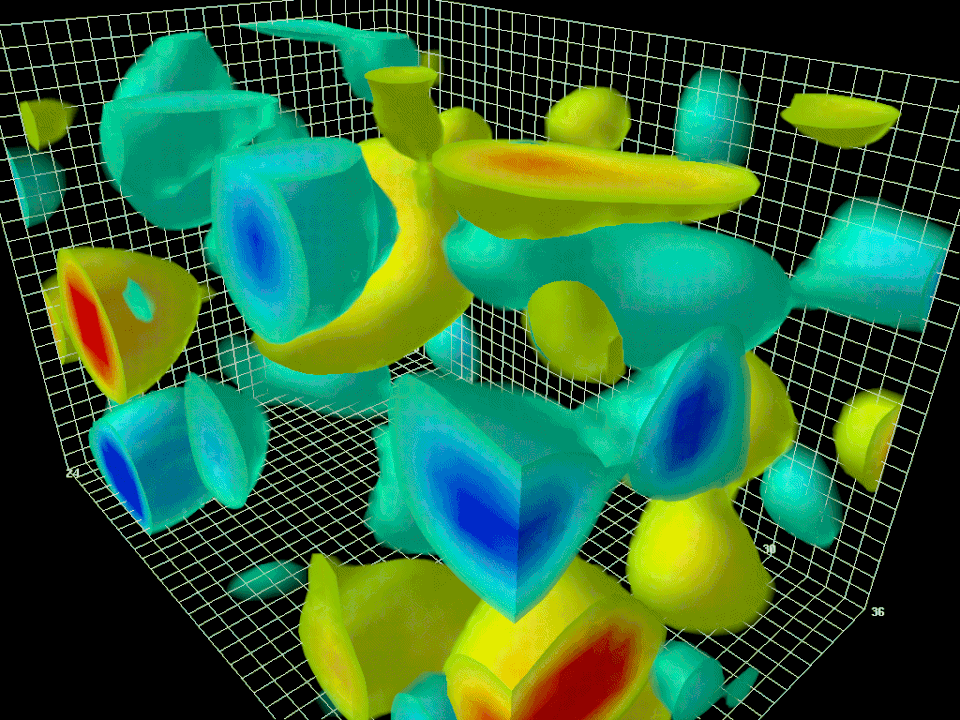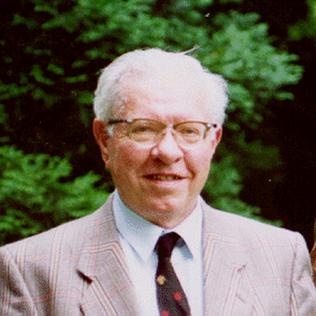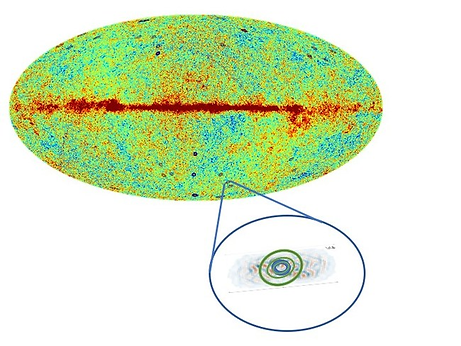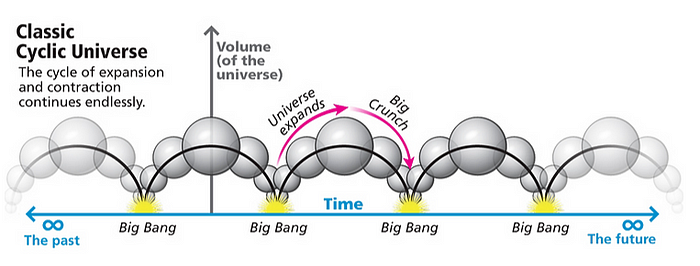Why the current model of the universe breaks a fundamental law, that energy cannot be created nor destroyed.
The arrow of time is often defined in the universe as the ever-increasing entropy. The reason for this is that an hour earlier, there was even lower entropy, and the day before yesterday, there was even less entropy. Going back over 13 billion years, the universe was in an even lower entropy state at the singularity. At the singularity, the universe was in the lowest entropy state. Some physicists stop there and say that this is the beginning of the universe, but others like to go even further back in time, before the big bang and even before the singularity. After all, energy cannot be created or destroyed. So the current cosmology of the universe, the big bang theory, which physicists say is the beginning, breaks a fundamental law of the universe, the law of conservation of energy, which states that energy cannot be created or destroyed.
The universe that doesn’t break this law is called a Cyclic Universe.
This strange theory is by physicist Sir Roger Penrose and entails that the universe has went through many big bangs, not just one, from the infinite past. Though, Penrose is not the father of a Cyclic Universe. Such a universe is also called an Ekpytotic universe. The original ekpyrotic model was introduced by Justin Khoury, Burt Ovrut, Paul Steinhardt and Neil Turok in 2001.
Steinhardt created the name based on the Ancient Greek word ekpyrosis (ἐκπύρωσις, “conflagration”), which refers to a Stoic cosmological model in which the universe is caught in an eternal cycle of fiery birth, cooling and rebirth. This reminds me of the Chinese philosophy Yin and Yang.
One of these Ekpytoic universes is called CCC theory. The three key things of Conformal Cyclic Cosmology are conformal geometry, Hawking Radiation, and Hawking Points.
Hawking Points are evidence of a previous universe located in the Cosmic Microwave Background, which could be remnant signals from Supermassive Black holes from a previous aeon.
Hawking Radiation is the radiation from those supermassive black holes that evaporated.
Conformal geometry is well… strange.
According to Penrose, as the universe increases in size, it enters a conformal phase where its size becomes irrelevant. Essentially, big and small lose their meaning. This allows the radiation from black holes that evaporated in the previous aeon to interact, forming quantum fluctuations that lead to a new “beginning” and a big bang. This is the same universe, and according to Roger, this process will repeat itself infinitely in the future. Penrose provides evidence of prior aeons, which he calls Hawking Points, so this theory is not just derived from his arse.
Penrose enjoys to use this painting by Escher to try and convey what conformal geometry would look like. As you can see in this painting, the top bats may appear big but as you peer down, they are the same size or shape for the matter, meaning the energy that evaporated from the black holes can now interact as they’re close enough to do so rather than being dissipated opposed to being far out like in the Heat Death hypothesis. As in Heat Death, the energy would be so far out due to the ever increasing expansion of the universe but in the conformal phase, the universe is small again because the universe has expanded so ridiculously large that it ‘’forgets’’ its size, therefore we’re back at the singularity.

In this strange bubbly animation, this is quantum foam, the very things that started the big bang. The current model of the big bang contradicts the fundamental law of the conservation of energy by stating that there was a beginning. This outright breaks this fundamental law. You cannot have a beginning because energy cannot be created nor destroyed. A beginning means that energy was created. In fact, a catholic priest founded the big bang to support Creationism, hence there is an beginning.
There was no beginning as this breaks the law of conservation of energy, energy merely changes from one form to another. The universe has no beginning or death and this saves the the law of conservation of energy from being broken. Some rules are meant to be broken but not the law of conservation of energy.
So the universe is not 13.8 billion years old. It is more than trillions of years old. It’s infinite.
Hawking Points in the Cosmic Microwave Background. This is the evidence that Penrose provides. These are remnant signals from supermassive blackholes from a previous aeon. He calls previous universes aeons because it is the same universe.
Here’s a wee diagram here showing how the conformal rescaling would occur. As you can see the crossover into the new aeon is not a different universe at all but rather the exactly same universe. And due to the conformal phase, the universe doesn’t understand what size is therefore all the energy is able to interact.
If we look at this epic diagram of a black hole, Hawking Radiation is emitted. This won’t occur until the dark ages of the universe which will be in an extremely long time from now.
Essentially, the universe will be very dark hence the dark era of the universe which will be in “n > 101 . The
current model of the universe will state that this is the end of the universe. But Penrose’s conformal phase allows the left over radiation that evaporated from those black holes & can now interact once more and eventually over time, quantum fluctuation will arise again.
So, now that the “squashing down” the future conformal boundary to a conformally regular
hypersurface.
The result is a new solution to Einstein’s equations, which Penrose takes to represent the entire universe, and which is composed of a sequence of sectors that Penrose calls “aeons”. So we’re now at the singularity. This is not to say that the big bang never occurred, it certainly did, but it is a event in the history and in the future just like any other event in the universe.
In the aeon we’re in now, when the universe cools down in the dark era, the same will occur again. Penrose states that this has occurred into the infinite past and will continue into the infinite future. Why? Because Cosmic Cyclic Cosmology does not break the law of conservation of energy since the universe is not having a creation. A creation would ultimately and utterly break this law. I’m confident that Penrose’s cosmology will replace the current model and there’s nothing wrong with that, that’s what science is all about, evidence replaces the old obsolete big bang theory and then we move on.
So the universe is not only 13.8 billion years old, it is trillions upon trillions of years old; even surpassing sextillion years old.
A universe without a beginning or ending.
This may be difficult to grasp but it could be entirely nature. After all, in quantum physics, weird stuff occur all the time, stuff that’s beyond common sense; there’s a thing called retrocausality where effect precedes cause.
Time runs left to right in this Feynman diagram of electron–positron annihilation. When interpreted to include retrocausality, the electron (marked e−) was not destroyed, instead becoming the positron (e+) and moving backward in time.
So, it should not be surprising that the universe did not have a beginning and has always existed forever. The Principle of Plenitude could be used to further grasp this notion. The principle asserts that the universe contains all possible forms of existence.
Due to this weirdness in QM, a non-causal universe may just be natural after all, beginnings and endings are concepts and somewhat illusions. If we die, we will certainly lose our minds, but our bodies go back where it came from. A star dies but then if it goes supernova, it’s not dead, it transforms into something else; elements, elements that eventually made us. So, it seems that this ongoing of transformation, birth, death, is a fundamental feature of the universe. A cyclic universe is a universe which follows an infinite self-sustaining cycle. In the 1930s, even Einstein came up with the idea that the universe could go through an infinite cycle of Big Bangs and Big Crunches way before the likes of Penrose and others did. The expansion of our universe could have been caused by the collapse of a previous universe — it sort of bounced back from the contraction of the universe before it. You could say our universe was reborn from the death of the universe before it. If this is true, then our Big Bang was not a unique event; it was one insignificant bang among an infinite number of other bangs.
So we have a different form of a cyclic universe which is the big bounce. The big bounce universe is a bit different to Penrose’s Cosmic Cyclic Cosmology because the universe doesn’t collapse onto itself, rather it evades Heat Death through conformal geometry and the energy left over from the supermassive black holes gives rise to it. Apart from that, the big bounce is similar.
In Penrose’s unique cosmology, the universe is a great cycler, constantly recycling the universe’s content for ever and ever and ever.
CCC and the Fermi paradox
In 2015, Gurzadyan and Penrose also discussed the
Fermi paradox, the apparent contradiction between the lack of evidence but high probability estimates for the existence of extra-terrestrial civilizations. Within conformal cyclic cosmology, the cosmic microwave background provides the possibility of information transfer from one aeon to another, including of intelligent signals within the
information panspermia concept.
Cycles in nature: Did you notice?
From hurricanes, tornadoes, bicycles, circadian rhythms, galaxies, literal rubbish recycling, wheels, seasons; the carbon cycle, rain; and many other cycles in nature!
So the universe does indeed like to cycle! The universe is a cyclic universe even down here on Earth. Isn’t this amazing?
At the beginning of this article, we pondered about elements recycling from that fundamental law we talked about, elements that enjoy to transfer their energies; cycle their energies. With all of these things as aforementioned, you can now see that Sir Roger Penrose could be on to something with his CCC theory. I’m confident that one day Roger’s cyclic cosmology could replace the current cosmology, but in the meantime, Heat Death still is in the game and may be the ultimate fate of the universe.
I hope you enjoyed this article as much as I did. This article is for a script that will be used for an upcoming video on this particular subject.
let’s recap.
- The Universe goes through cycles of Big Bangs.
- Radiation from Supermassive Black Holes is used as evidence of a previous aeon , so called Hawking Points.
- The Universe forgets its size -changes to conformal geometry.
- Due to the conformal phase, the Hawking Radiation is able to interact as essentially the Universe is very small in this unique phase, so will not die of heat death.
This suggests that the universe had no beginning. And instead, always has existed without cause. it’s very hard to grasp but it could be entirely possible that this is just how the universe works. It also says that the universe is eternal. Maybe you’ve already read this article. Maybe that’s why dejavu occurs?
Even modern physicists and philosophers believe that the idea of an endless universe predates them, believing that the universe is undergoing a cycle of birth, death, and rebirth (Big Bang, Big Crunch, Big Bang) which is more or less similar to some religious ideas as well. In Hinduism and Buddhism, the term “wheel of time” is a term that refers to the notion that time is cyclical, consisting of repeating ages that are considered to be cyclical over time. As with the idea of a cyclical universe, there is also something similar to the idea of a samsara in Hindu, Buddhist and Jain philosophy. The word “Samsara” is translated from Sanskrit as “continuous flow” and it refers to the cycle of birth, death and rebirth (rebirth is also called reincarnation in Buddhism).
As per Hindu philosophy, the universe was created by Brahman (the Big Bang), the life of the universe is maintained by Vishnu, and the universe will at some point be destroyed by Shiva (the Big Crunch). There is no end to this process as it continues for eternity. The continuous creation and destruction of the universe as represented by the outward and inward breath of the cosmic giant Maha Vishnu, a supreme god beyond the comprehension of a human, is depicted in a number of stories found in the Puranas, an ancient collection of Hindu texts. In Hindu cosmology, each universe exists for over 4 trillion years.
And interestingly enough, Chinese philosophical concept that describes opposite but interconnected forces. In Chinese cosmology, the universe creates itself out of a primary chaos of material energy, organized into the cycles of yin and yang and formed into objects and lives.
So there you have it, the universe may very well be forever.
Check out my YouTube channel at
youtube.com/spaceponder for more interesting ponderings.








